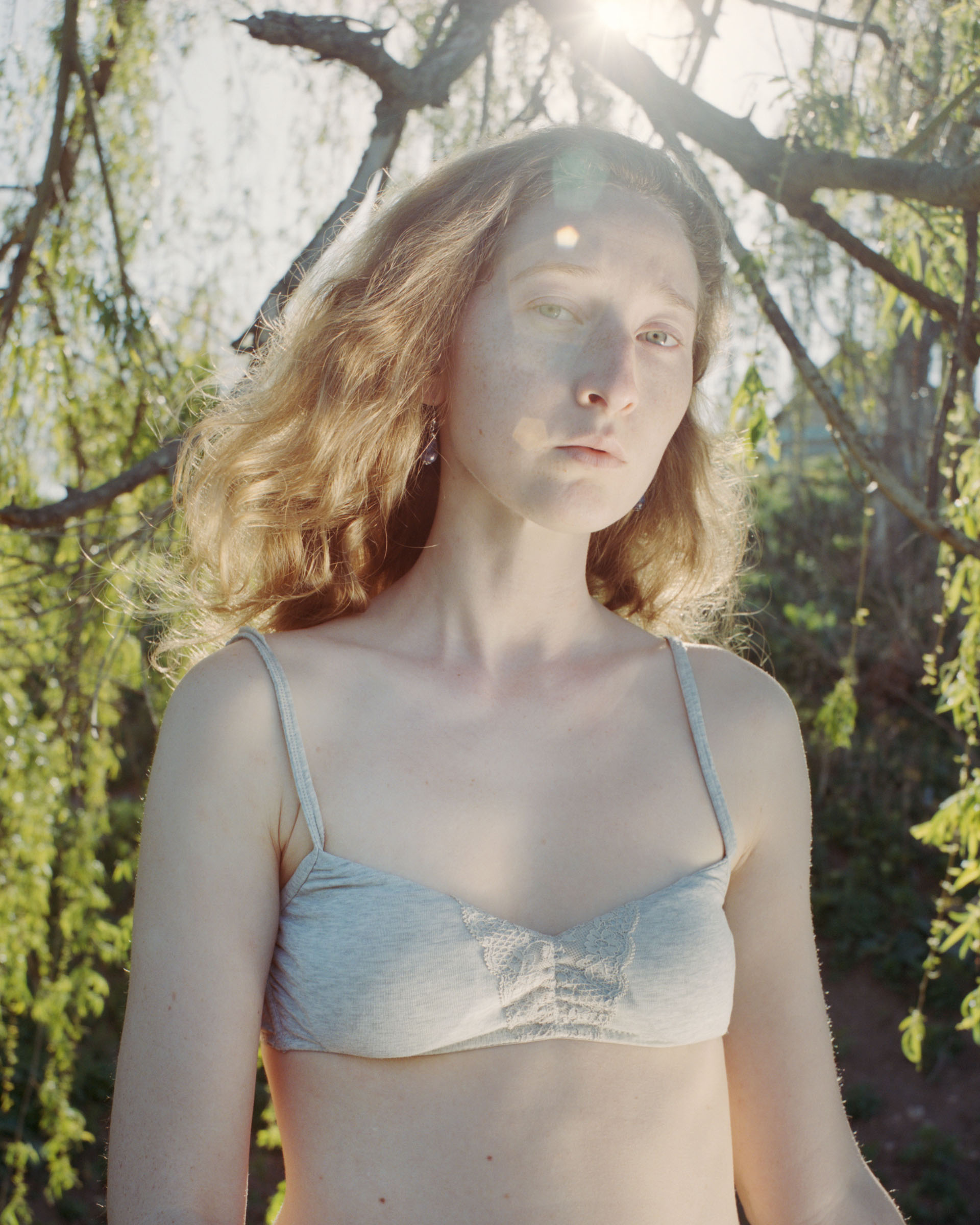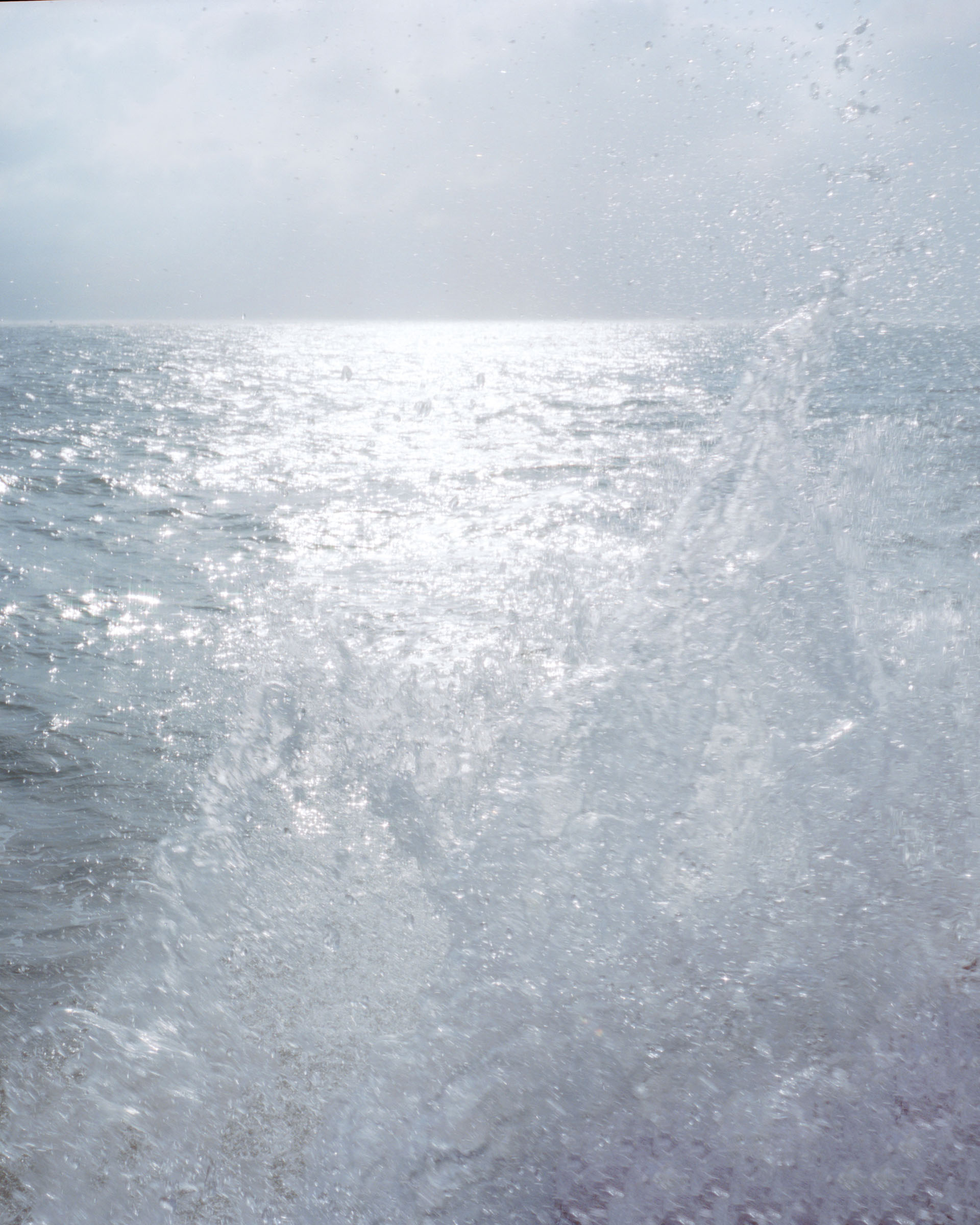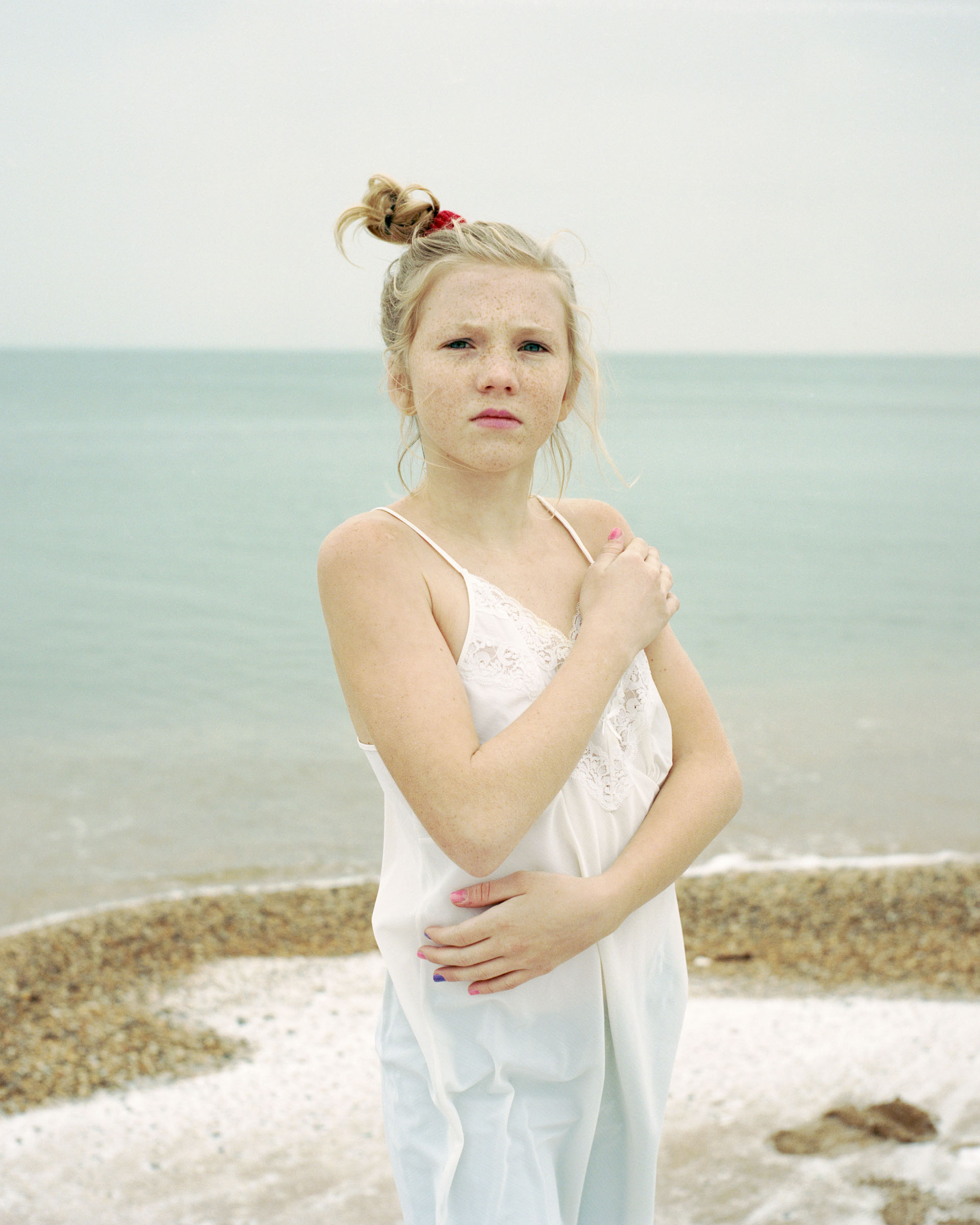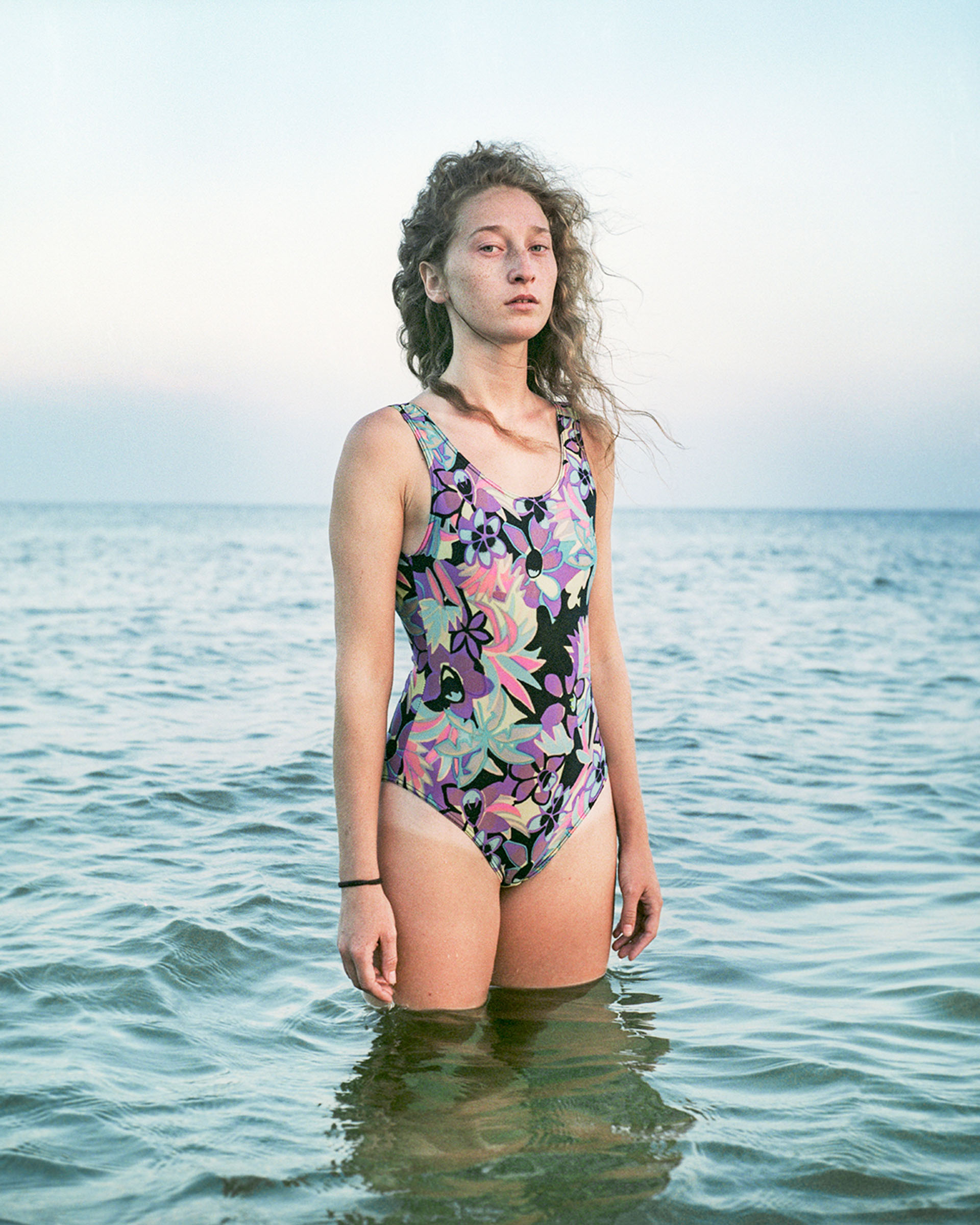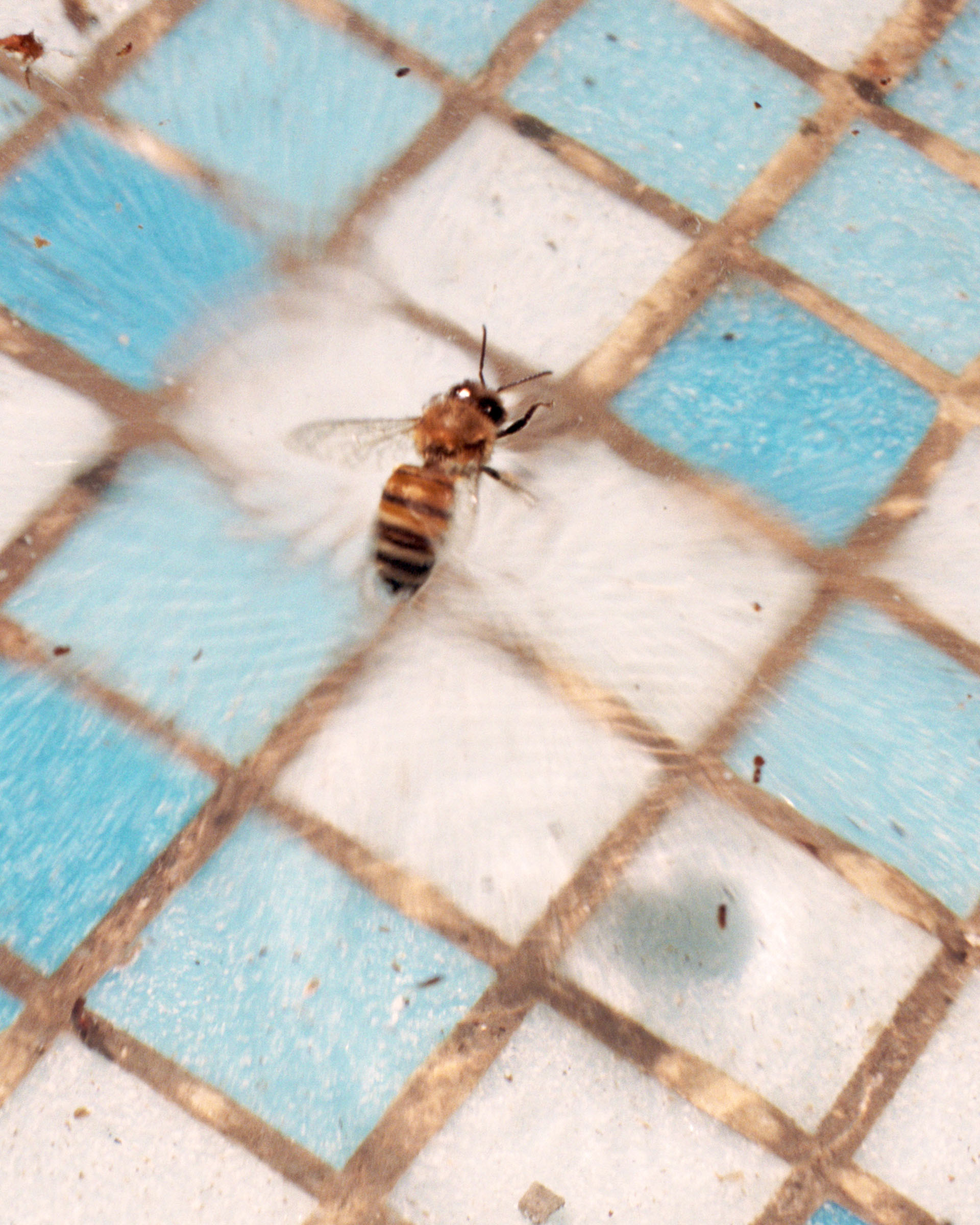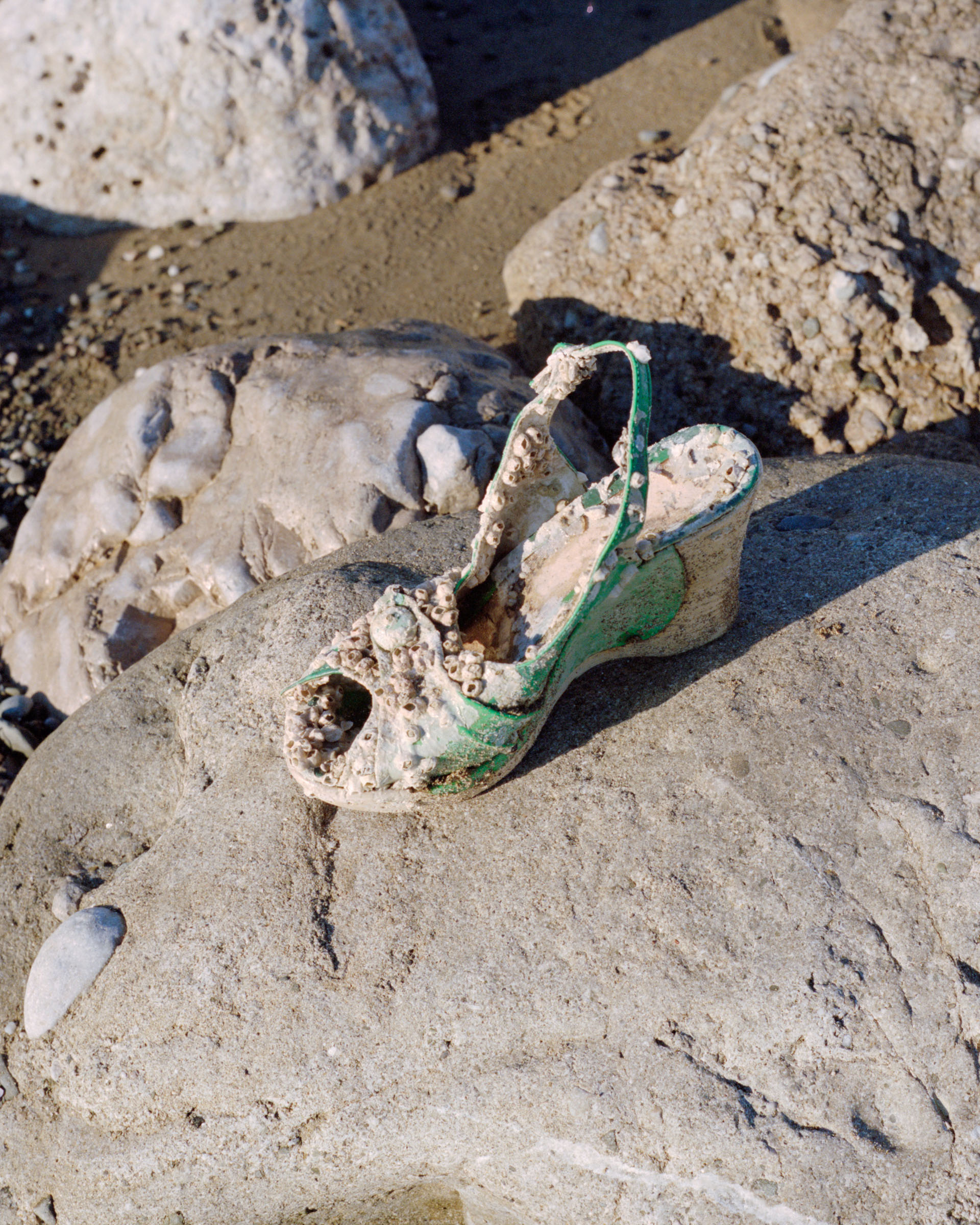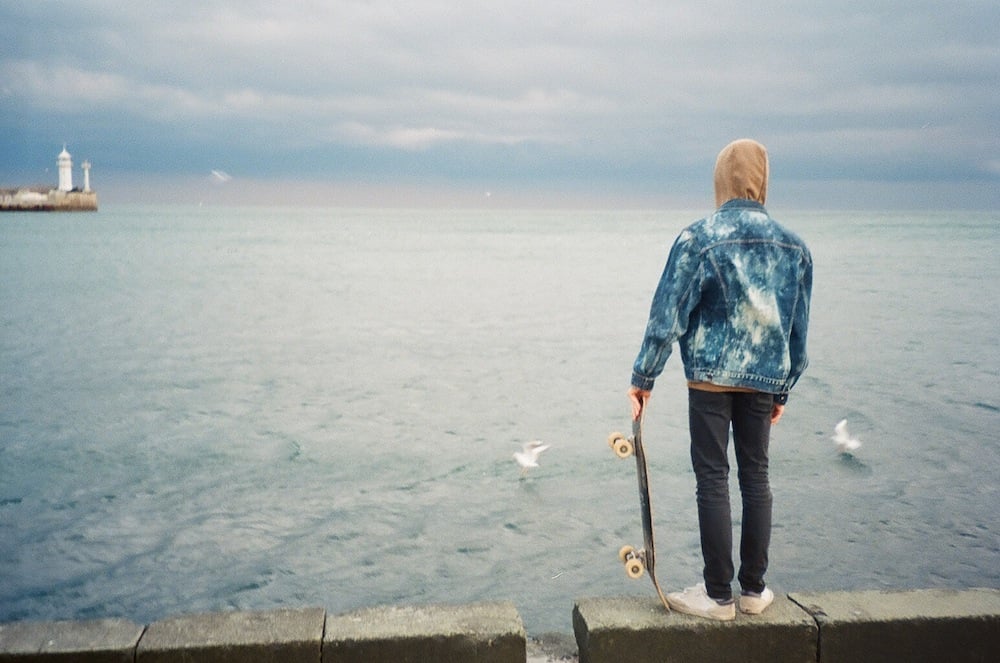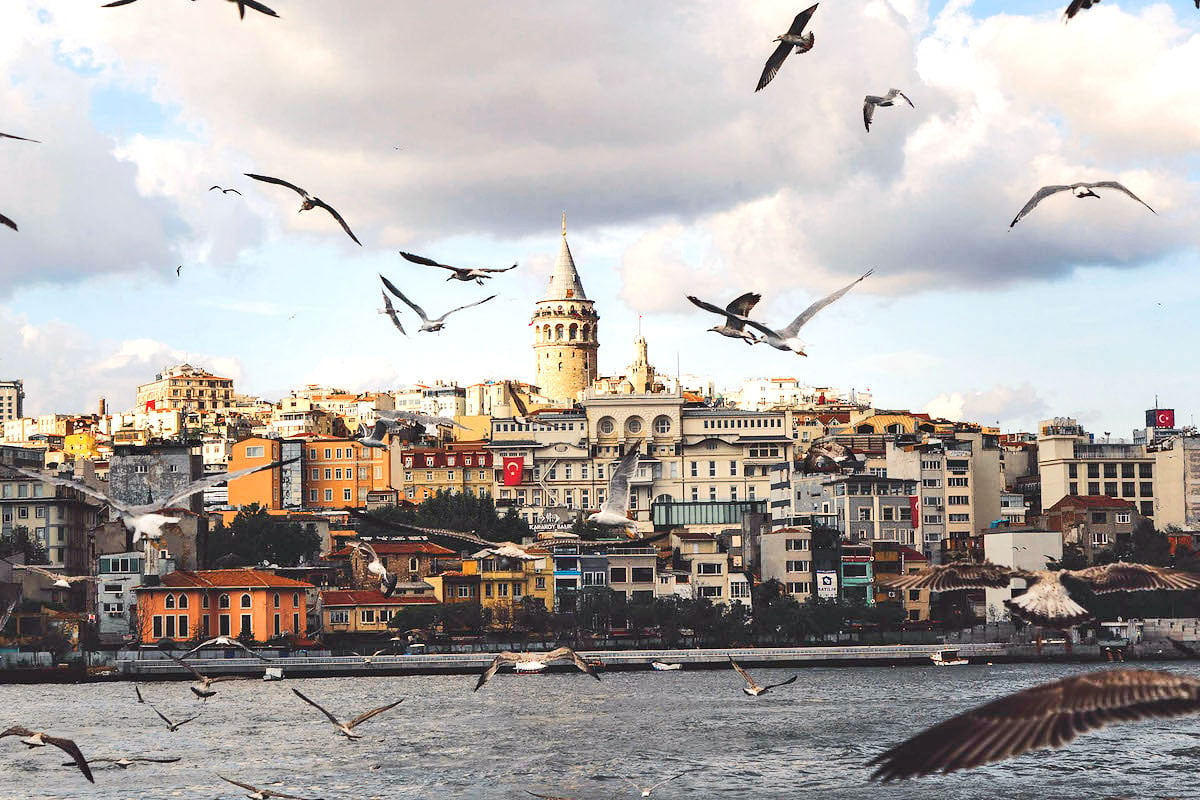One photographer’s homage to Crimea and the women who inspire her
Stifled by city life, photographer Olga Vorobyova finds solace in shooting her hometown on the Black Sea coast.
The Greek poet Hesiod said that Aphrodite was born from sea foam. Her story is written in those first moments. No sooner does she step foot on land, she is already in the spotlight, overcrowded and fussed over by onlookers. At least that’s the image that Botticelli depicts in The Birth of Venus, a painting which has been ingrained in Western culture as a symbol of femininity. The reference is so overused that it has become a truism. The message: there is often little room for a woman to be herself on her own terms.
“The view of the horizon fills so many people’s hopes, fears, and expectations”
One of the women in Olga Vorobyova’s portraits recalls Botticelli’s painting in her pose and expression. Taken on the Black Sea coast, in a small provincial town of Primorskiy on the Crimean peninsula where the photographer was born, her portrait series is dedicated to the women Vorobyova had grown up with, including her mother, her grandmother, and her best friend. At no point did she intend on referencing The Birth of Venus. If anything, she set out to capture the small freedoms of growing up on the coast, among nature and fresh air. Each portrait is revelatory and gentle, and imbued with a longing for home. The camera angle is pointed upward ever so slightly, enough to show a feeling of admiration for her subjects.
Vorobyova counts the sea as a protagonist in her photos. “The view of the horizon fills so many people’s hopes, fears, and expectations,” she says of the locals’ relationship with the coastline. In recent years, Vorobyova’s hometown and this very seafront have been affected by Russia’s 2014 annexation of Crimea, which is why it was important for the photographer to show the lives of the people living there.
As a young teenager, Vorobyova wanted nothing more but to escape her small town. Yet once she moved to Moscow, her mind was focused on home — the open spaces, the wild forests, the salty breeze. Her trips back have inspired her photo projects including this series, titled Girl Who Used to Be. In Moscow, she noticed the way everyone was cramped and closed in a big metropolis. Small towns, on the other hand, have a calming openness, not limited to physical space. “At home, whether on transport or on the street, I like to overhear stories about people’s lives, what news they received, what they had for dinner,” something which she has struggled to find living in Moscow. Besides the nature and easy flow of conversation, she missed the women in her life. “I spent my childhood and adolescence raised largely by women. When I left my hometown and acquired some independence I started thinking what I would have been like if I’d stayed there.”
“I shoot women of different ages, those who are significant for me, and those who remind me of myself,” she adds. Besides the women closest to her, she photographed the women who attended her rhythmic gymnastics gym, her school, and one of the eldest women of the town. “As I was shooting this project, I thought about myself as a little girl who doesn’t know what kind of future is waiting for her in such a small village.”
Among the portraits is a photo of a women’s shoe abandoned on the shore. Left for so long, it has grown barnacles and blended into the landscape. It looks like it was left by a person who wanted to dip their toes into the sea — perhaps Aphrodite returning to home?
